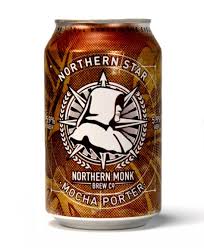What happens when I try and work from home…
9am start – Oh Frasier’s on. I’ll just put it on low in the background while I sift through my emails…
9.01am – I love this episode… It’s the one where they take a trip in Martin’s Winnebago… Better get a cup of coffee, so I can focus on the episode, I mean the emails…
9.06am – The emails can wait.
9.30am – Wahoo, another episode of Frasier!
10am – Ok, work seriously begins.
10.05am – Better quickly check Facebook.
10.11am – *Engages in heated Facebook discussion as to where the best burger in London can be found*
10.43am – Phone call from my superior with more tasks to complete. Ugh
10.44am – I do some actual work.
12pm – Lunchtime!
1.32pm – I do more actual work.
2pm – I play with the cat. He’s so cute.. Aren’t you Kitty Boy? Aren’t you? Yeees.
2.38pm – I send off the spreadsheets that were due by noon
2.39pm – Coffee break
3.13pm -Send a few emails
3.33pm – Hometime… Oh wait, I am home!
Does this working from home scenario sound familiar? No? Well you’re a far better person than I…
We have reached record peak numbers in the UK of people working from home. Almost 13.9% of the workforce works from home, however, it’s been noted that too many bosses don’t trust employees to work from home… And I can see why.
It’s not that we mean to faff around when working from home, it’s just inevitable, as our homes are spaces of relaxation and enjoyment and to completely sever these connotations and attachments and actually turn the home into a space of concentration and productivity can be difficult. This is why sometimes even going to the local coffee chain and using their wifi can be useful… “I’m out of the house, I’m achieving things!”… But we all know that these environments are not really inspirational either. Enter Out of Office.
At our new hotdesking space Out of Office, the first thing people notice when they walk in is the atmosphere: it’s alive. It has a crackle about it which excites people and fuels people to sit down and start working. It is a space where great ideas are born and plans executed. Out of Office is a hub where you can work from on either a casual or permanent basis. We have different options available to suit your needs. Out of Office is just a ten minute walk from Clapham Junction, and we serve up the finest tea and coffee, none of this polystyrene cup instant stuff. But perhaps one of the most unusual yet appealing factors about Out of Office is that at 5.30pm, we turn into a micro pub; a space where cracking drinks are served and where you can bounce ideas off your fellow co-hotdeskers. It’s a place for networking and creation. You never know who might be seated at the next table, and where a simple conversation can take your business. One of our chief aims is to bring together London’s finest start-ups and ideas-people and let the magic happen.
Sounds better than working from home? It surely does. Our name was no accident either, as every mundane aspect that drove you out of a conventional office in the first place doesn’t exist at Out of Office.
Get in touch with us to come and have a look around the space. We think you’ll love it.















